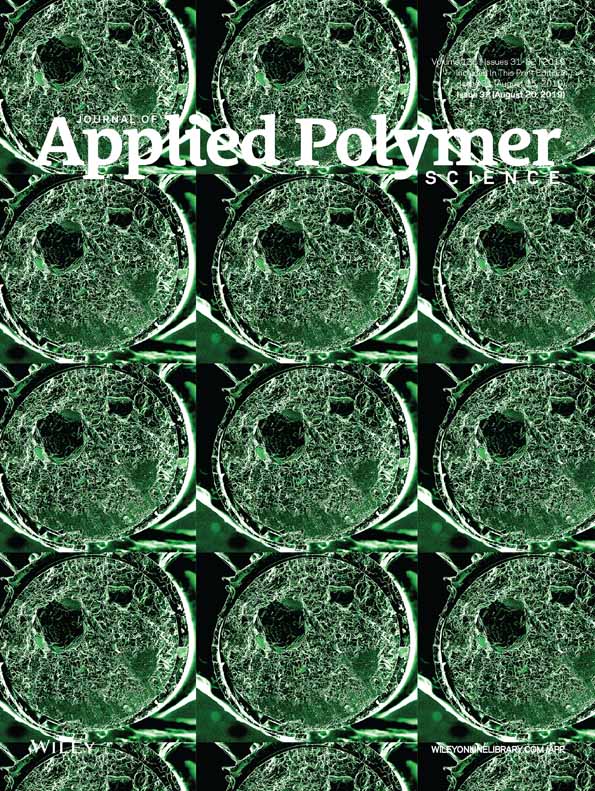Curing of a tetrafluoroethylene–propylene elastomer with high-vinyl polybutadiene rubber and peroxide
ABSTRACT
A cocuring agent is necessary for tetrafluoroethylene–propylene elastomer (FEPM), which cannot be cured by peroxide alone. We observed that high-vinyl polybutadiene rubber (HVBR) could be used as a cocuring agent for FEPM. The structure and properties of FEPM–HVBR blend vulcanizates were investigated by 13C-NMR, differential scanning calorimetry, swelling tests, tensile tests, dynamic mechanical analysis, and thermogravimetric analysis. This research showed that HVBR significantly improved FEPM by conferring a high crosslink degree to the FEPM–HVBR blends. When the HVBR concentration was 25% without any filler reinforcement, the tensile strength of the FEPM–HVBR blend vulcanizate reached 11.6 MPa, and the crosslinking density reached 171 μmol/cm3. In addition, HVBR improved the thermal stability of FEPM and changed the glass-transition temperature (T g) of the blend; as the HVBR content increased, the T g of the blend also increased. 13C-NMR analysis confirmed that crosslinks existed between the HVBR and FEPM macromolecules. When the blends contained trace amounts of HVBR, free-radical reaction was more preferred between FEPM and HVBR, whereas when HVBR was 15% or more, crosslinking between HVBR was predominant. These findings expand the choices for the curing of FEPM. © 2019 Wiley Periodicals, Inc. J. Appl. Polym. Sci. 2019, 136, 47836.




